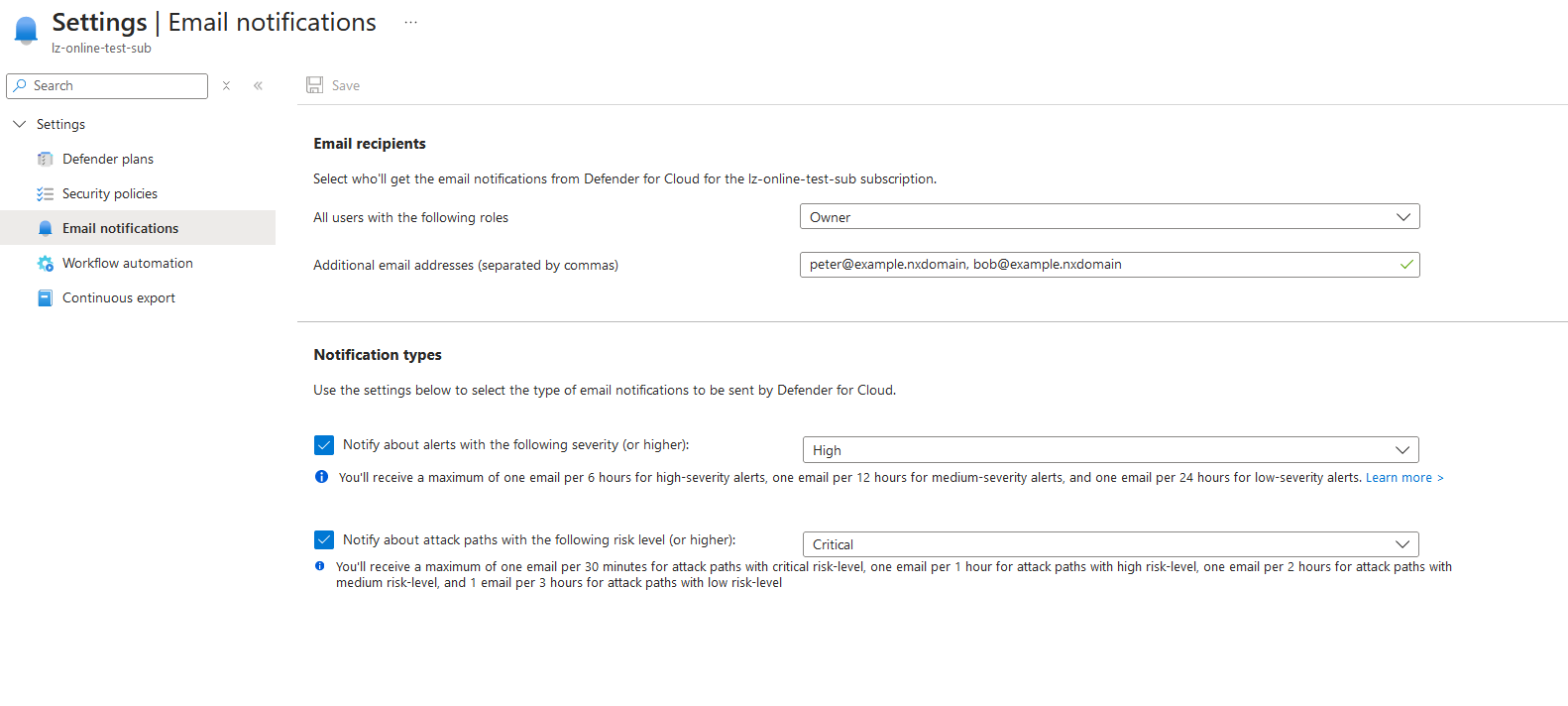"The provided email's format isn't valid" when setting up email alerts from Defender for Cloud via ARM
I’ve been looking at how to use Azure Policy to configure email alerts from Defender for Cloud across an Azure subscription. To do this, I’m using a deployIfNotExists policy effect to deploy an ARM template if a subscription doesn’t have any email notifications set up in Defender.
Said ARM template looks something like this:
{
"$schema": "https://schema.management.azure.com/schemas/2019-04-01/deploymentTemplate.json#",
"contentVersion": "1.0.0.0",
"parameters": {
"emailSecurityContact": {
"type": "string",
"metadata": {
"description": "Security contacts email address"
}
},
"minimalSeverity": {
"type": "string",
"metadata": {
"description": "Minimal severity level reported"
}
},
"minimalRiskLevel": {
"type": "string",
"metadata": {
"description": "Minimal attack path risk level to alert on"
}
}
},
"variables": {},
"resources": [
{
"type": "Microsoft.Security/securityContacts",
"name": "default",
"apiVersion": "2023-12-01-preview",
"properties": {
"emails": "[parameters('emailSecurityContact')]",
"isEnabled": true,
"notificationsByRole": {
"state": "On",
"roles": [
"Owner"
]
},
"notificationsSources": [
{
"sourceType": "Alert",
"minimalSeverity": "[parameters('minimalSeverity')]"
},
{
"sourceType": "AttackPath",
"minimalRiskLevel": "[parameters('minimalRiskLevel')]"
}
]
}
}
],
"outputs": {}
}
I can test this using something like the following command (other methods of deploying ARM templates are available), and it works quite happily:
New-AzSubscriptionDeployment `
-TemplateFile .\securityContacts_ARM.json `
-Location uksouth `
-emailSecurityContact 'peter@example.nxdomain' `
-minimalSeverity "High" `
-minimalRiskLevel "Critical"
The stumbling block comes in when I try and set multiple email addresses. In the Azure Portal, you do this by entering a comma-separated list of addresses. Naturally I assumed that the ARM template would take in something similar:
New-AzSubscriptionDeployment `
-TemplateFile .\securityContacts_ARM.json `
-Location uksouth `
-emailSecurityContact 'peter@example.nxdomain, bob@example.nxdomain' `
-minimalSeverity "High" `
-minimalRiskLevel "Critical"
However, this spits out an error:
Status Message: The json value of emails failed validation, with reason:
Emails : The provided email's format isn't valid.
Please change it to a valid email address and try again., error tracking number: 4f68ad67-75a5-495c-8b44-52a307e5f8df (Code:BadRequest)
It turns out the fix is fairly simple, but the ARM template docs for this resource are totally lacking in examples so I only stumbled across it by looking up the Azure CLI command to do the same thing. Instead of using a comma, use a semicolon to separate your email list:
New-AzSubscriptionDeployment `
-TemplateFile .\securityContacts_ARM.json
-Location uksouth `
-emailSecurityContact 'peter@example.nxdomain;bob@example.nxdomain' `
-minimalSeverity "High" `
-minimalRiskLevel "Critical"
This will give you the following result:
